There’s so much to see and experience in Madrid. It’s an artistic city with awe-inspiring architecture, a vibrant nightlife, and great Spanish food.
Any first-time visitor will have their plate full from Madrid’s myriad attractions. The art museums alone will take up one or two days but if you’re staying long enough, then you may be interested in going on a day trip from Madrid.
From historic cities to prominent wine regions to iconic landmarks that have inspired art and literature, there are plenty of reasons to go on a day trip and explore the many fascinating destinations around Madrid.
MADRID DAY TRIPS QUICK LINKS
To help you plan your trip to Madrid, we’ve put together links to top-rated hotels, tours, and other activities here.
HOTELS
Top-rated hotels in Malasaña, one of the best and coolest areas to stay for first-time visitors to Madrid.
- Luxury: INNSIDE by Meliá Madrid Gran Vía
- Midrange: Hostal Adis
- Budget: Woohoo Hostal Madrid
TOURS
- Sightseeing Tour: 1 or 2 Day Hop-On Hop-Off Sightseeing Bus Tour
- Food Tour: The Original Tapas Crawl
- Flamenco Shows: Flamenco in Madrid
OTHER SERVICES
- Visa Services
- Travel Insurance (with COVID cover)
- Airport Transfers
- Car Rental
- Wifi Device / eSIM
- Go City Pass (tourist discount card)
Save This on Pinterest!
No time to read this guide on the best day trips from Madrid? Click on the save button and pin it for later!
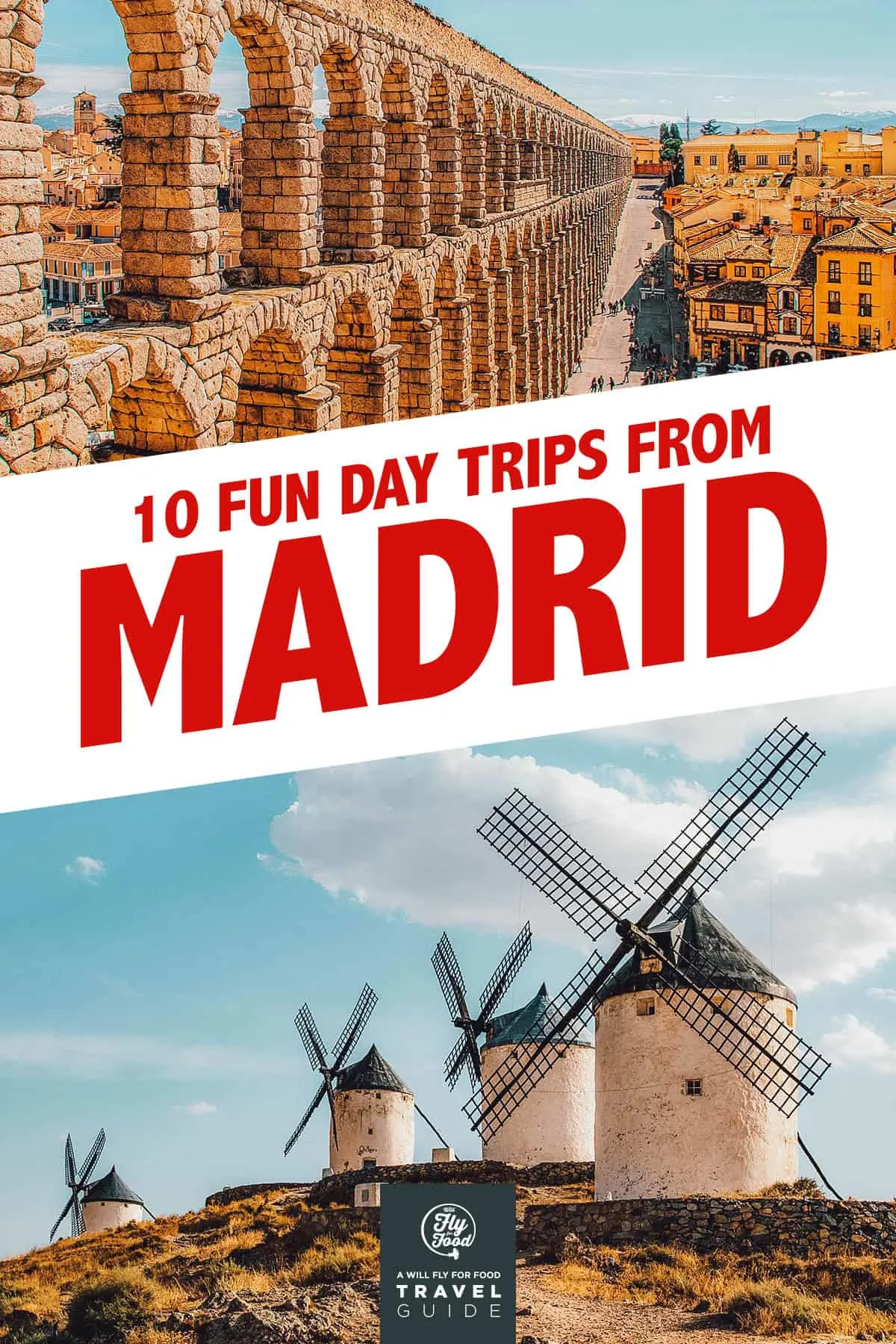
BEST DAY TRIPS FROM MADRID
Most of the places recommended in this guide are easily accessible thanks to Spain’s efficient railway system. However, timetables aren’t always ideal.
To make the most of your day trip from Madrid, you may want to consider getting a rental car. Trains and buses are convenient but driving is the best way to experience Spain and Europe.
We rented a car and drove from San Sebastian to Santiago de Compostela. It made our trip so much more enjoyable because it gave us the freedom to stop wherever we wanted, whenever we wanted.
Time is a key factor when choosing a day trip out of Madrid so I’ve organized this list by traveling time. Click on the links below to jump to any section of the guide. Estimated times are for one-way travel.
1 HR DAY TRIPS FROM MADRID
1. Chinchon
Chinchon is a small town located less than 50 km southeast of Madrid. Its proximity makes it an easy day trip from Madrid.
One of the town’s most interesting features is its plaza mayor (pictured below). It’s circular instead of square and surrounded by three-story houses with green wooden balconies. The plaza dates back to the Middle Ages and has been used to host royal celebrations, livestock fairs, bullfights, even public executions.
Around the plaza are many outdoor restaurants and bars where you can enjoy Castilian cuisine and a glass of Anis de Chinchon – an anise-based spirit named after the town that’s been producing it for over three centuries. Aside from anis, Chinchon is also known for its local wines, bread, olives, and white garlic.
Other notable attractions include the old clock tower, the Parador de Chinchon, the church of Nuestra Señora de la Asunción, and a few hikes leading up to miradores (lookout points) offering sweeping views of the town.
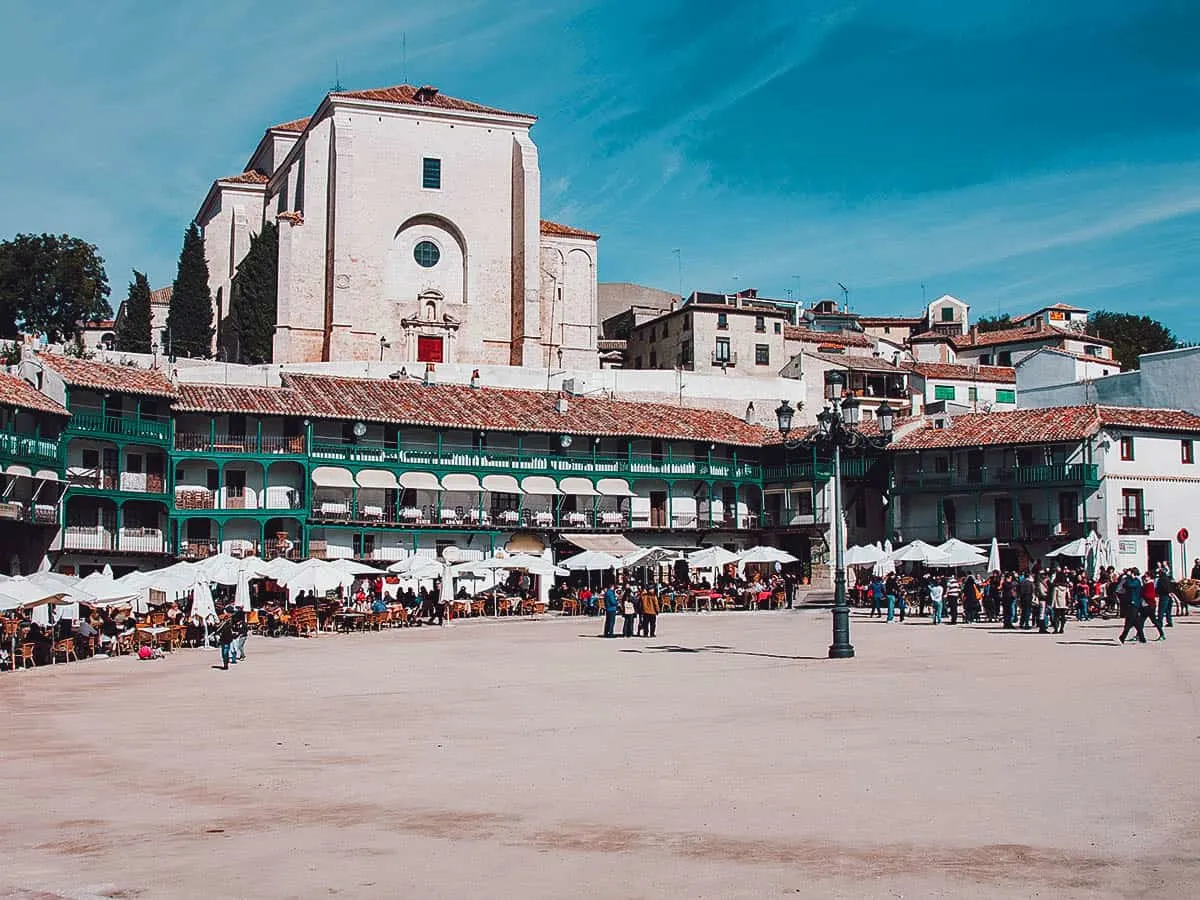
Photo by Lukasz Janyst
How to Get There From Madrid: Take Bus 337 from Madrid and get off at Chinchon.
Approximate Travel Time: About 45 mins
2. Toledo
Toledo is an ancient city and a UNESCO World Heritage Site overlooking the Tagus River in Castilla-La Mancha. It can be reached in about half an hour by high-speed train, making it one of the easiest and most popular Madrid day trips.
Toledo has a long and storied history that dates back over two millennia. It was a Roman municipium before becoming the capital of the Visigothic Kingdom. It was under Moorish rule for 374 years before being recaptured by the Christians in the Reconquista. In the 16th century, it served as Spain’s imperial capital under Charles V.
Influenced by Christianity, Judaism, and Islam, Toledo is a fascinating one-of-a-kind city that’s often referred to as the “City of the Three Cultures”. Take a walk around Toledo and you can see the role each of these religions had in the city’s history.
Check out our guide on visiting Toledo from Madrid by train to help you plan your trip. It’s a relatively small city with a lot to see, some of the most noteworthy attractions being Toledo Cathedral, the Synagogue of El Transito, and the Mosque of Cristo de la Luz.
It’s easy to visit Toledo on your own but you may want to consider going on a guided tour (Option 1 | Option 2). This city has so much history that I think it’s best experienced with a guide.
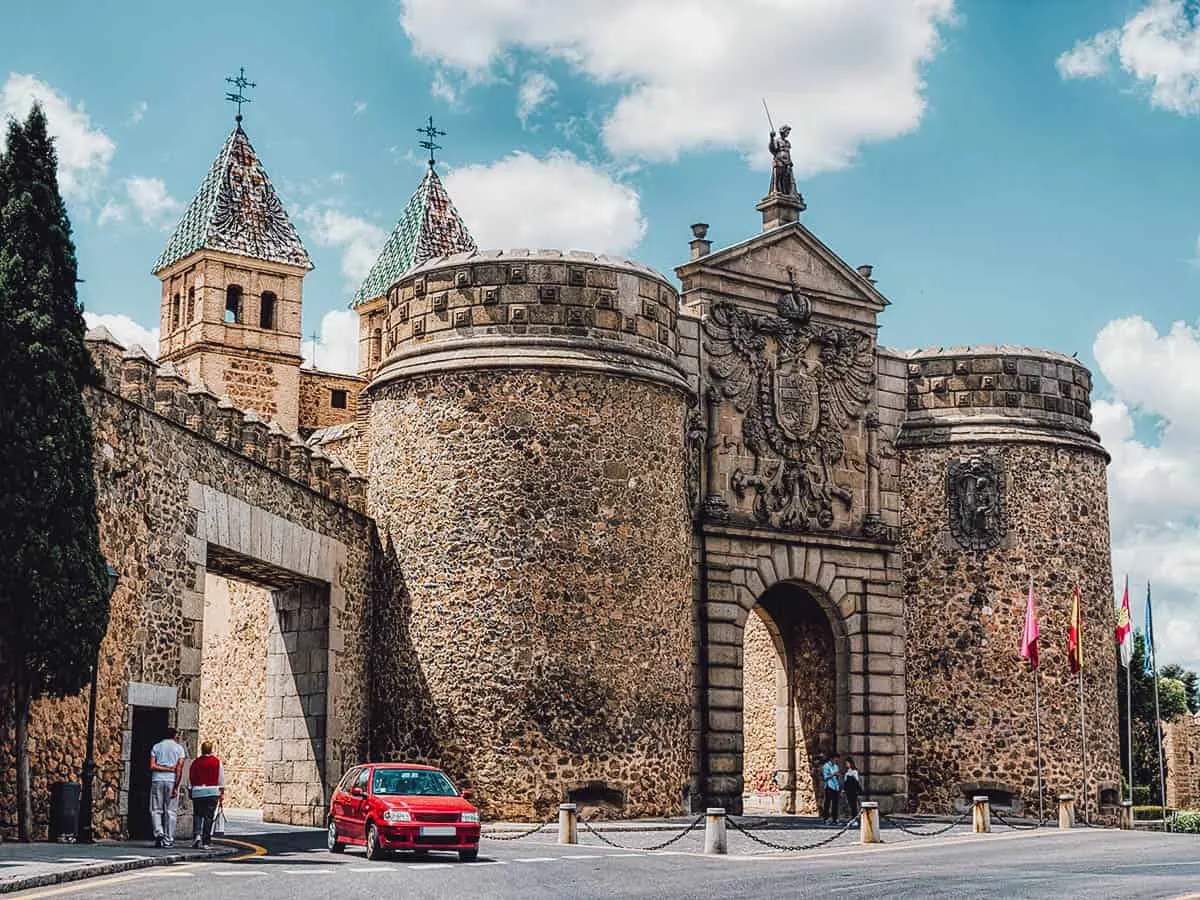
Photo by ArTono
How to Get There From Madrid: The fastest way to get to Toledo from Madrid is by high-speed AVE train. It departs from Atocha station and will get you to Toledo station in about 35 minutes. From there, it’s about a 10-15 minute walk to the medieval city.
Approximate Travel Time: About 45 mins
3. Segovia
Like Toledo, Segovia is a popular day trip from Madrid. It’s about 90 km (56 miles) northwest of Madrid and you can get there in about half an hour by high-speed train.
Segovia is a UNESCO World Heritage Site famous for its ancient Roman aqueduct. Made up of 166 arches stretching for over 17 km (10.5 miles), this massive structure transported water from La Acebeda to the Alcazar, a medieval fortress rumored to have inspired Disney’s Cinderella castle.
The Catedral de Segovia – a massive Gothic cathedral located in Segovia’s Plaza Mayor – rounds out Segovia’s big three. If you travel for food like we do, then don’t miss the cochinillo asado which is a Segovian specialty of roast suckling pig.
The skin on the cochinillo is so delicate and crunchy that it’s customarily cut with the side of a plate. Two recommended restaurants to try it are Restaurante Jose Maria and Meson de Candido.
It’s easy enough to visit Segovia on your own, but if you’d like to go on a guided tour, then you can book one through Get Your Guide (Option 1 | Option 2). These tours combine Segovia with other destinations recommended in this guide.
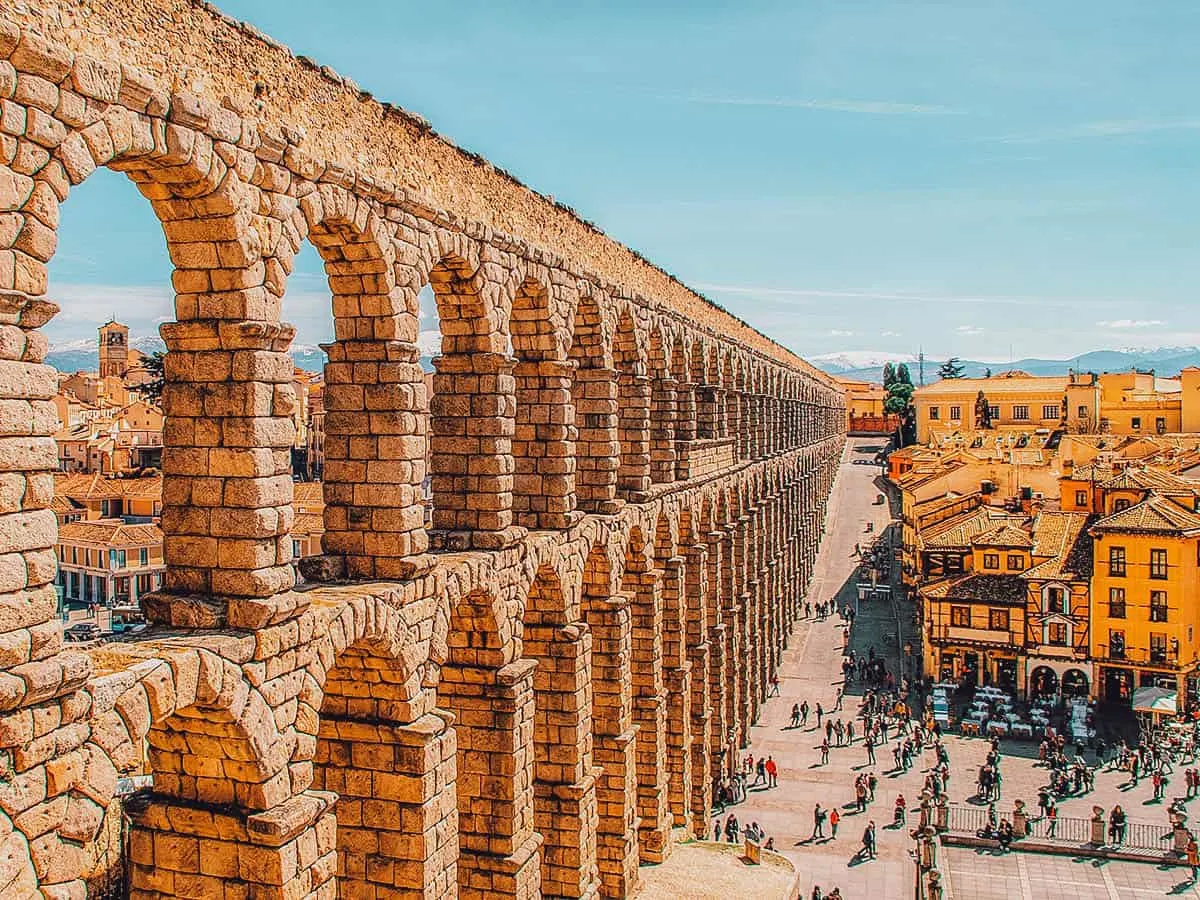
Photo by Vladimir Sazonov
How to Get There From Madrid: The fastest way to Segovia from Madrid is by high-speed AVE train. It departs from Chamartin station and will get you to Segovia-Guiomar station in about 30 minutes. The station is about 8 km (5 miles) from the city center so you can catch Bus 11 or 12 to take you into the city.
Approximate Travel Time: About 45 mins
4. Monastery of El Escorial
The Royal Site of San Lorenzo de El Escorial, commonly known as the Monastery of El Escorial, is the historic residence of the King of Spain and the Spanish royal family. It’s a UNESCO World Heritage Site that’s been called the most important architectural monument of the Spanish Renaissance.
During the 16th and 17th centuries, El Escorial was at once a monastery and a Spanish royal palace. It was a home for both the royal and religious powers of Spain, symbolically united under one massive roof.
Today, it continues to function as a royal palace, monastery, basilica, library, and museum.
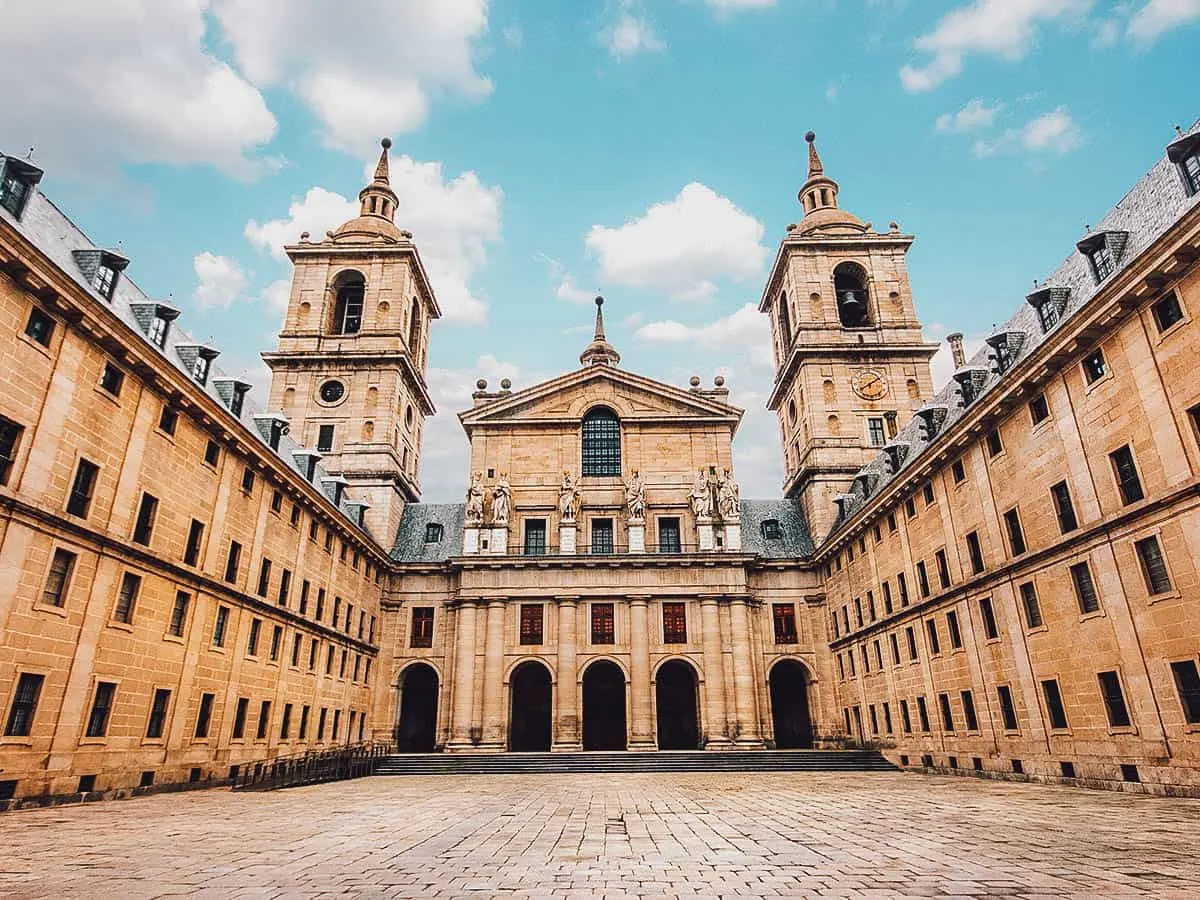
Photo by canadastock
How to Get There From Madrid: Take the C3 regional line from Madrid to El Escorial station. From there, it’s about a 10-minute walk to the Monastery of El Escorial.
Approximate Travel Time: About 1 hr
1-2 HR DAY TRIPS FROM MADRID
5. Valle de los Caidos
Located less than 15 km (9.3 miles) from the Monastery of El Escorial is Valle de los Caidos, or “Valley of the Fallen”. It’s the most controversial day trip destination in this guide and a monument that leaves Spaniards divided.
Located in the mountains near El Escorial, Valle de los Caidos is a war memorial that serves as the final resting place of more than 40,000 civil war soldiers. It features a 150-meter-high stone cross (492 ft) that’s the tallest of its kind in the world.
Built by Spanish dictator Francisco Franco, it’s 18-year construction began immediately after the end of the Spanish Civil War. Franco claimed it to be a monument of healing but he used political prisoners in its construction, forcing them to work in conditions that have been likened to a concentration camp.
After Franco’s death in 1975, his body was buried in the monument’s basilica for 44 years. Ring-wing extremists view it as a place of reverence while critics call it a monument to fascism. Franco’s remains were exhumed and moved to Madrid in October 2019.
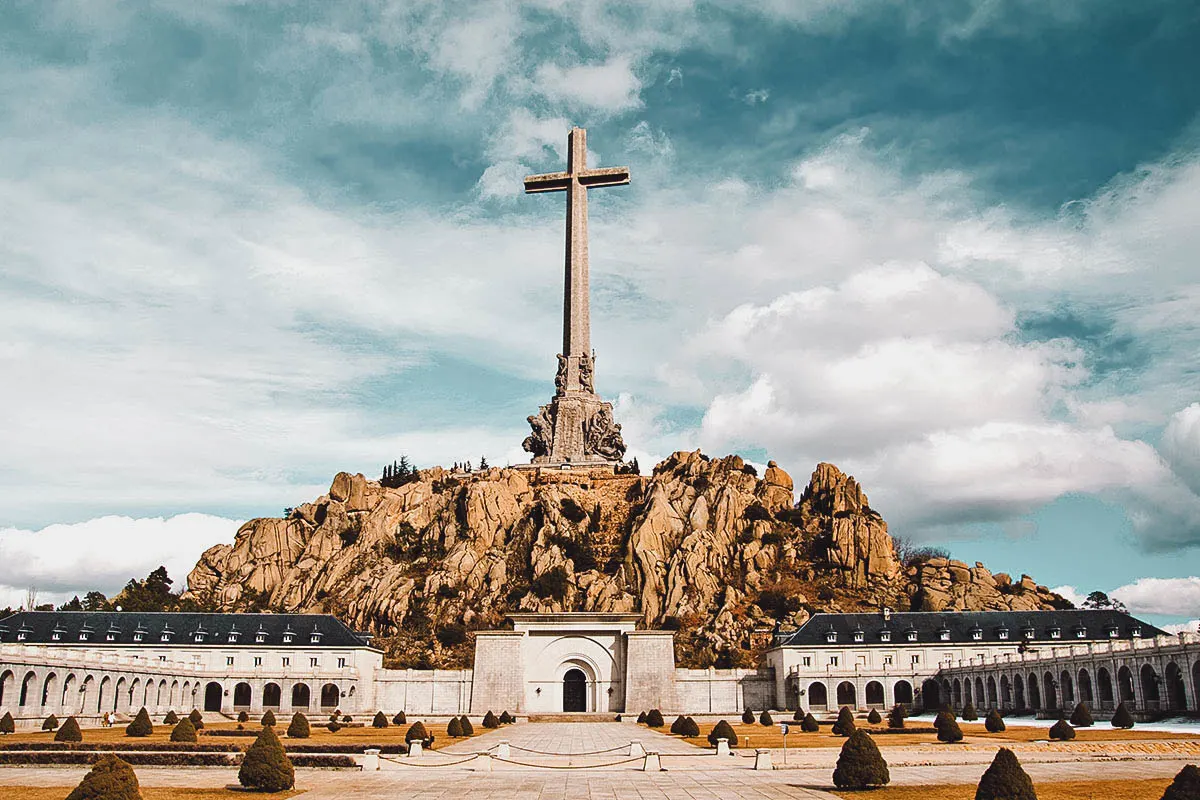
Photo by kasto via Deposit Photos
How to Get There From Madrid: Take Bus 661 from Moncloa station in Madrid to San Lorenzo de El Escorial bus station. From the bus station, you’ll need to catch Bus 660A to Valle de los Caidos. It departs just once daily at 3:15PM and goes back to San Lorenzo de El Escorial station at 5:30PM, giving you about an hour at the monument. Be sure not to miss the 5:30PM bus back. Otherwise, you could be spending the night there.
Approximate Travel Time: About 1 hr 15 mins
6. Cuenca
Cuenca is a UNESCO World Heritage Site in Castilla–La Mancha, about 170 km (106 miles) east of Madrid. Built on the steep sides of a mountain, it’s famous for its casas colgadas or hanging houses that appear to defy gravity.
Built between the 15th and 18th centuries, Cuenca’s casas colgadas are built right up to the cliff’s edge. Many of the houses are several stories tall with wooden balconies that hang precipitously over the Cuenca Gorge. When you’re on one these balconies, you’re practically standing over the gorge.
The casas colgadas are a spectacular sight and the main draw in Cuenca, but the town offers other interesting attractions as well like Cuenca Cathedral, Parador de Cuenca, and the Spanish Museum of Abstract Art which is housed inside one of the casas colgadas.
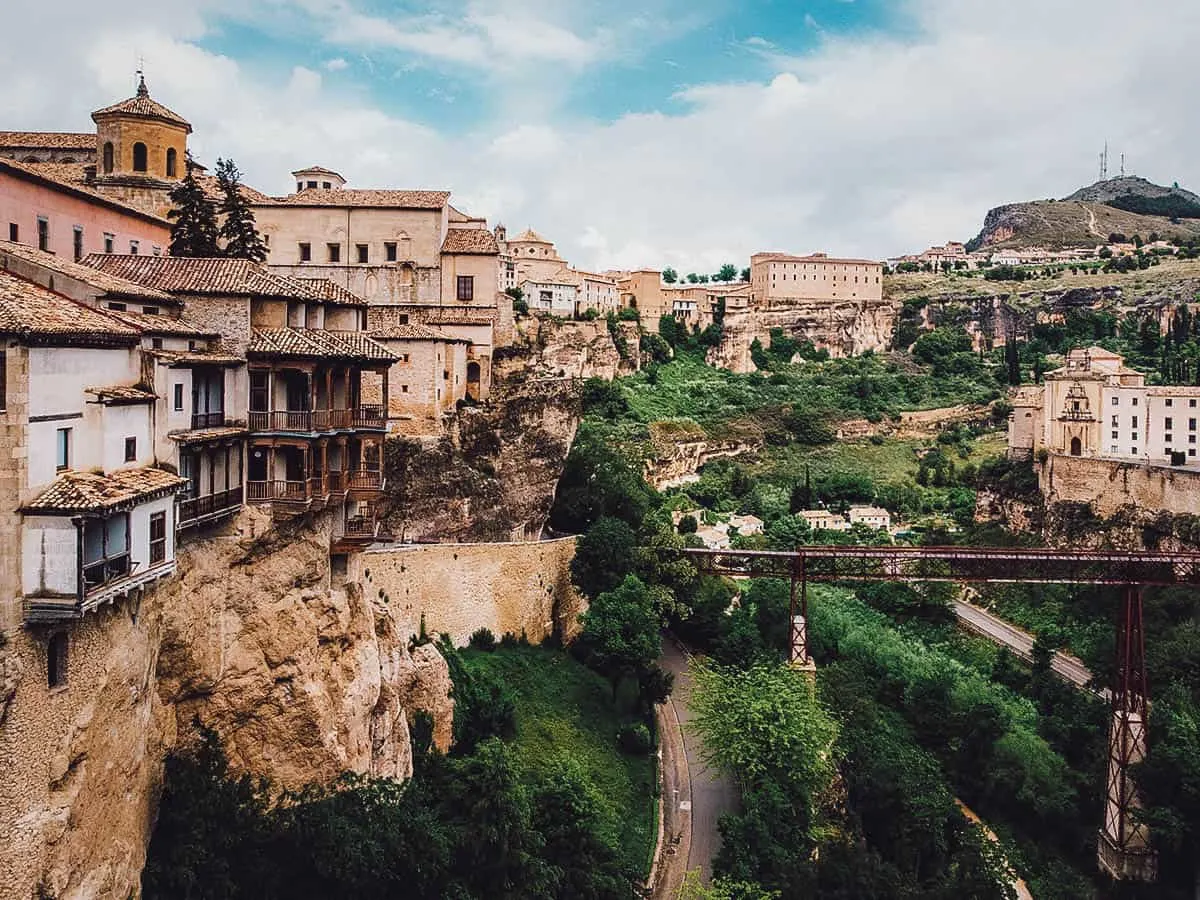
Photo by Iulius Agency
How to Get There From Madrid: The fastest way to get to Cuenca from Madrid is by AVE high-speed train. It departs from Atocha station and gets you into Cuenca-Fernando Zóbel station in about an hour. However, the station is about 6 km (3.7 miles) outside the city center so you’ll need to catch a bus or taxi into the city.
Approximate Travel Time: About 1 hr 15 mins
7. Avila
Avila is a UNESCO World Heritage Site in Castilla y Leon. It’s famous for its medieval city walls which are among the most well-preserved in Europe.
Built between the 11th and 14th centuries, the Walls of Avila stretch for over 2.5 km (1.6 miles) and have an average height of 12 meters (39 ft). They’re made up of 9 gates, 88 semi-circular towers, and over 2,500 turrets that served as an important line of defense against the Moors after the Reconquista.
Inside the ancient walls are many historical and religious attractions, some of the most prominent being the Cathedral of Avila, the Basilica of San Vicente, the Convent of Saint Theresa, and the Mirador of the Four Posts.
You can visit Avila on your own by train, or you can go on a guided tour (Option 1 | Option 2). These tours combine Avila with other destinations in this guide.
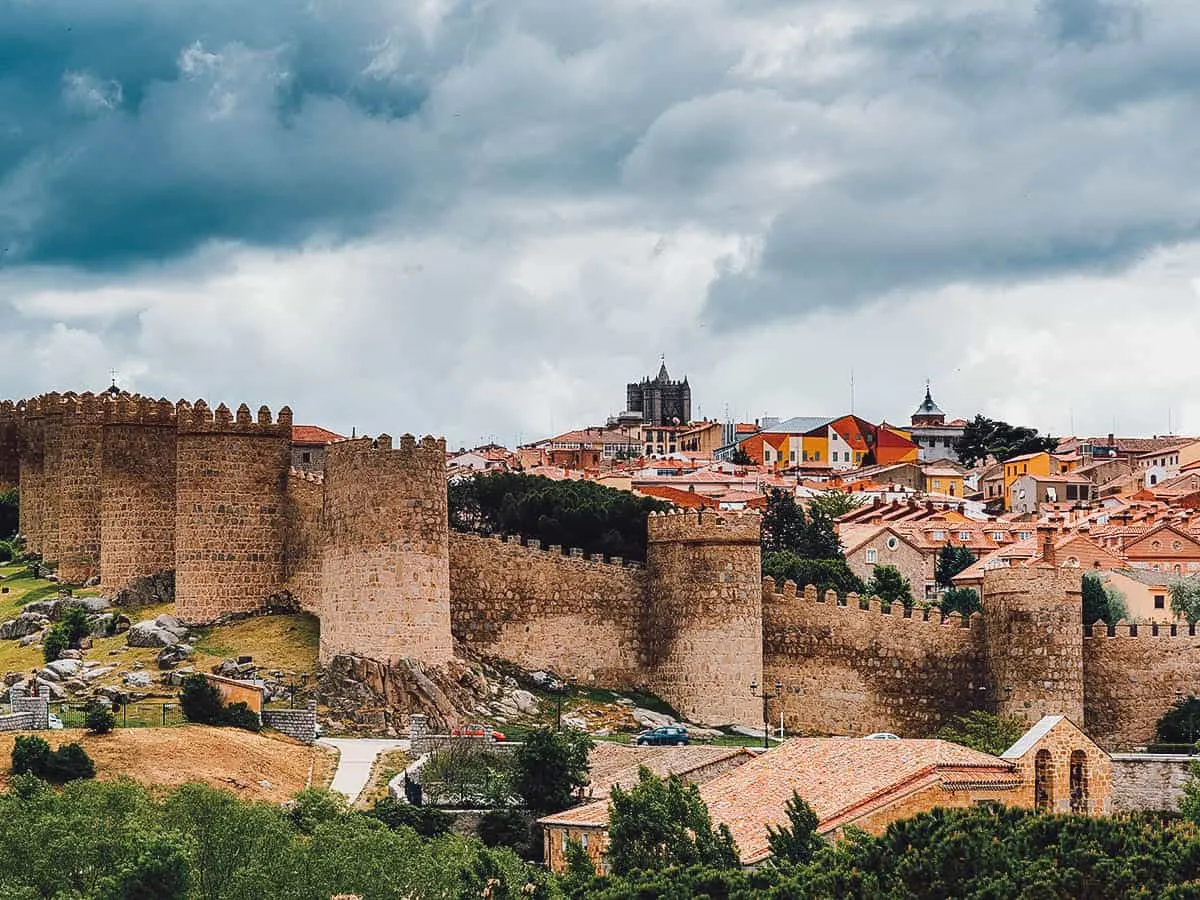
Photo by marcin jucha
How to Get There From Madrid: The most convenient way of getting to Avila is by train. You can catch a train from Principe Pio station in Madrid to Avila Station.
Approximate Travel Time: About 1 hr 40 mins
8. Ribera del Duero
If you have a keen interest in wine, then you’ll probably want to make a day trip from Madrid to Ribera del Duero. It’s an important wine-making region in Castilla y Leon famous for its red wines made mainly from tempranillo grapes.
Wines produced in the Ribera del Duero region enjoy Denominacion de Origen (DO) status. For a bottle to carry the Ribera del Duero DOP label, it must adhere to a strict set of guidelines that govern every step of the wine-making process, like the types of grape used, the ageing method, etc.
As far as I know, there’s no easy way to get to the Ribera del Duero region on your own so it’s best to go on a wine-tasting tour.
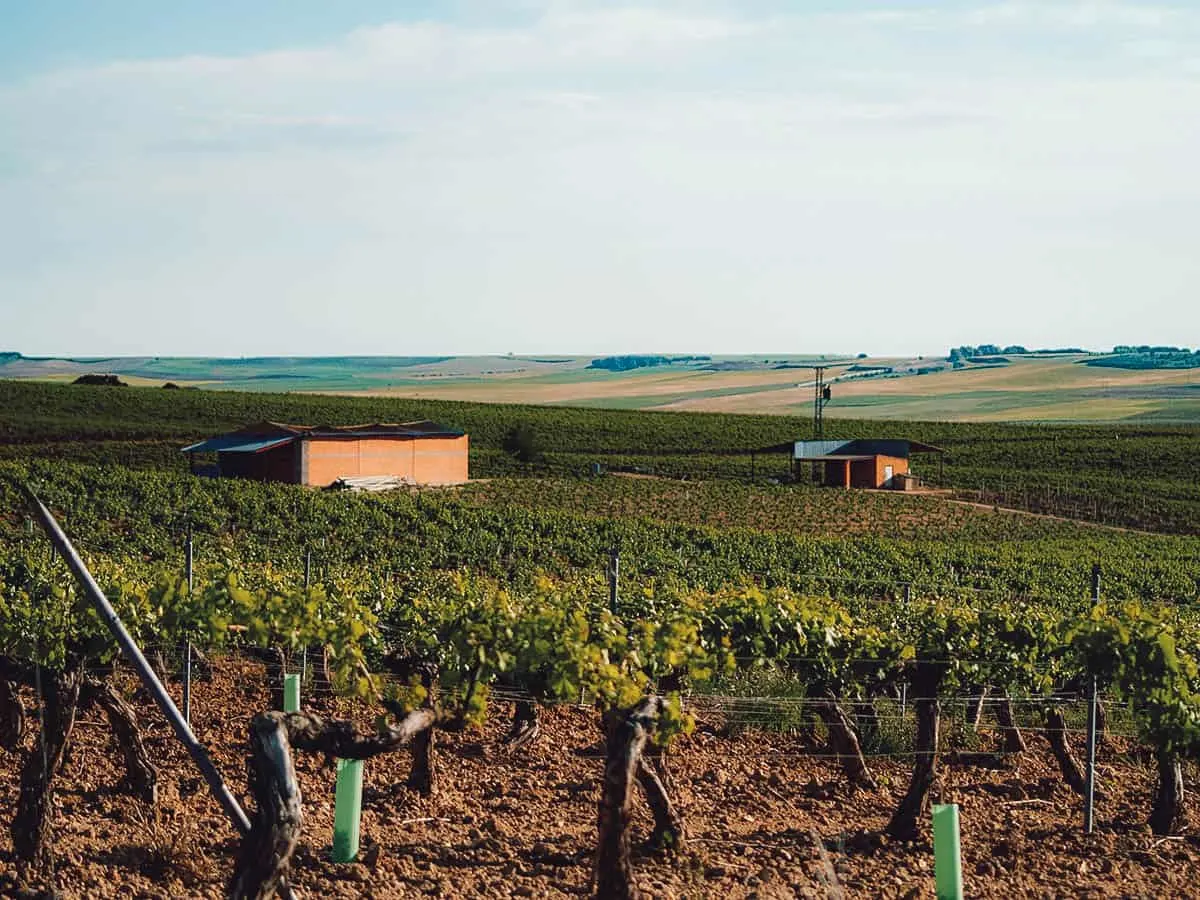
Photo by anuskiserrano
How to Get There From Madrid: There doesn’t seem to be an easy way of getting to Ribera del Duero from Madrid using public transportation. It’s best to either rent a car or go on a guided tour.
Approximate Travel Time: About 2 hrs
9. Consuegra
Consuegra is a town in the La Mancha area of Toledo province. It’s famous for its twelve white tower windmills that are believed to be the windmills described in Miguel de Cervantes’ famous 17th-century novel, Don Quixote.
In the book, Don Quixote de la Mancha mistakes the windmills for giants with flailing arms and picks a fight with them. This memorable scene led to the coining of the English idiom “tilting at windmills”, which means to attack imaginary enemies.
Consuegra is a must-visit for fans of the novel but other than the windmills and the Moorish castle, there isn’t as much to do there. It’s perhaps best visited by rental car.
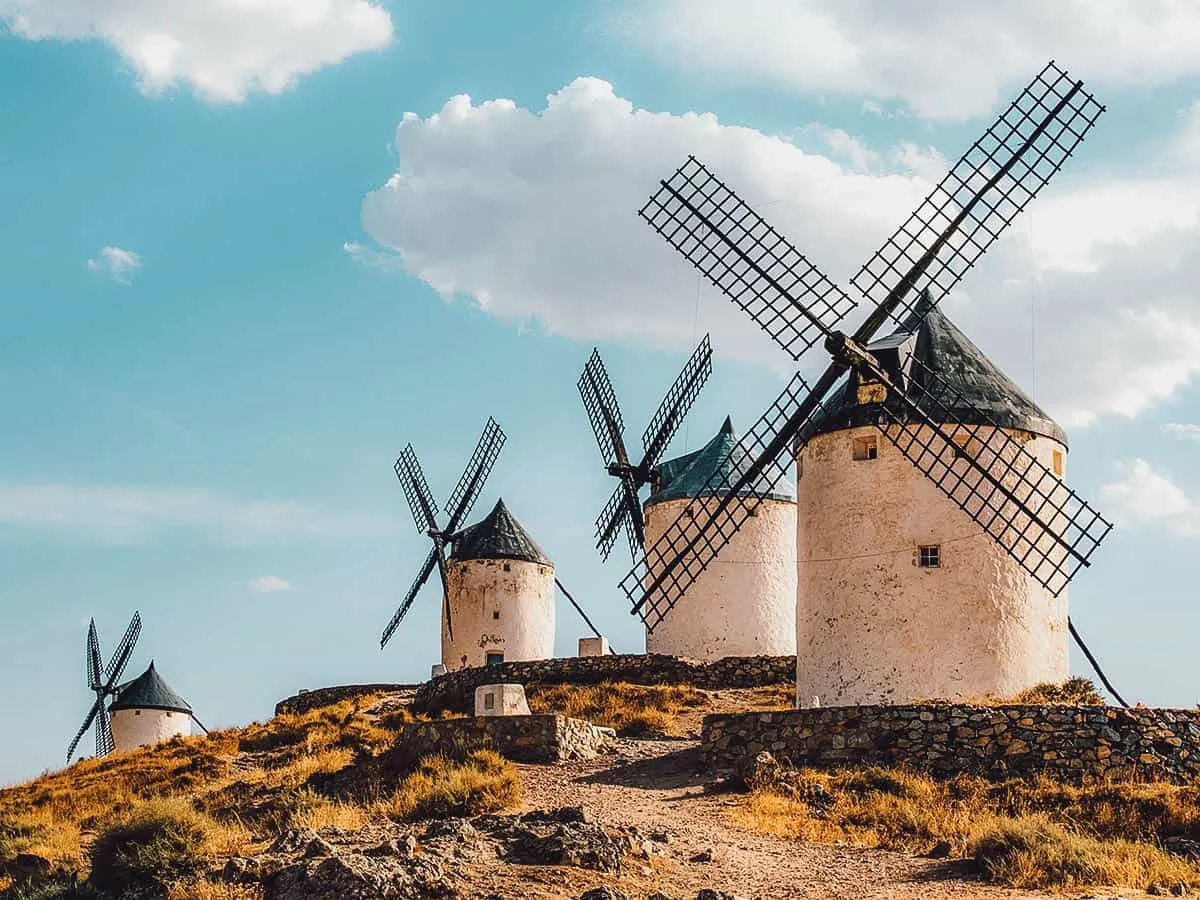
Photo by Ivan Yang
How to Get There From Madrid: Getting to Consuegra by public transportation isn’t easy. You can catch a Samar bus from Estacion del Sur bus station in Madrid to Consuegra. It seems to depart just once daily and doesn’t get you into Consuegra until 3:55PM, which means you’ll probably have to stay the night. On top of that, it doesn’t give you the option of taking a direct bus back to Madrid so you may have to go through another city first. To avoid headaches, it’s best to rent a car.
Approximate Travel Time: About 2 hrs
2-3 HR DAY TRIPS FROM MADRID
10. Salamanca
Salamanca has been called one of the most spectacular Renaissance cities in Europe. Its historic center is a UNESCO World Heritage Site that’s home to numerous Romanesque, Gothic, Moorish, Renaissance, and Baroque monuments.
Among Salamanca’s most famous landmarks are its university and Plaza Mayor. Established in 1134, Salamanca University is the second-oldest university in Europe. It’s hailed as one of the country’s finest examples of Renaissance architecture and is a favorite destination for international students wanting to learn Spanish in Spain.
Even more iconic perhaps is Salamanca’s Plaza Mayor which is one of the biggest and most beautiful squares in Spain. Like the university, it’s considered an emblem of the city.
The university and Plaza Mayor are the most famous, but there’s plenty to see and appreciate in this university town like the Museo Art Nouveau y Deco and the New and the Old Cathedral. Considering the distance [215 km (133.5 miles)] and all it has to offer, it may be best experienced on an overnight stay rather than a one day trip from Madrid.
Taking the morning train will give you a little over 4 hours to explore the city before having to catch the high-speed train back to Madrid. Alternatively, you can go on this guided tour. It’s an 11-hour tour that takes you to both Salamanca and Avila.
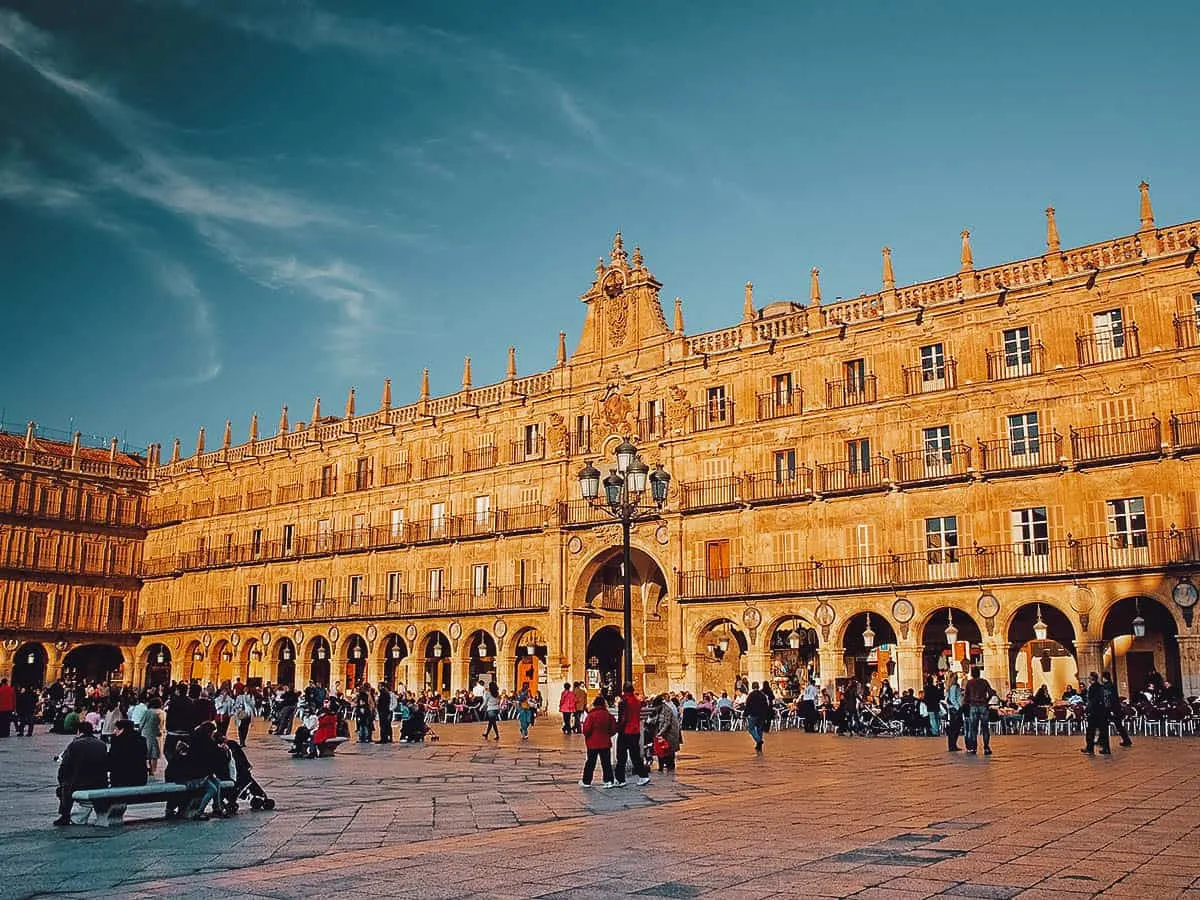
Photo by Botond Horvath
How to Get There From Madrid: The fastest way to get to Salamanca from Madrid is by high-speed train. However, it seems to depart just once daily at 3:55PM, getting you into Salamanca at 5:36PM. It makes more sense to catch the slower 11:10AM train then take the high-speed 6:20PM train back to Madrid.
Approximate Travel Time: About 2 hr 45 mins
FINAL THOUGHTS ON THE BEST DAY TRIPS FROM MADRID
Like Barcelona, there’s so much to see and do in Madrid that most first-time visitors will have their days filled with visits to the city’s museums and markets alone. But if you’re staying long enough, then you may want to go beyond the city and do one of these popular Madrid day trips.
I prefer exploring on my own but if you’d like to have the benefit of a guide explaining everything to you, then you want to go on a guided tour instead. I’ve included links under each day trip destination but you can search through Get Your Guide and Klook for tours from Madrid.
I hope this article on the best day trips from Madrid gives you a few ideas for your itinerary. Thanks for reading and have a wonderful time in Spain!
Disclosure
This article on the best day trips from Madrid contains affiliate links which will earn us a small commission if you make a purchase at no additional expense to you. We only suggest products and services that we use ourselves and can personally vouch for. We really appreciate your support as it helps us make more of these free travel guides. Gracias!
Stock photos via Shutterstock


Angie
Thursday 7th of March 2024
How is the weather during the end of March In Madrid?
YJ
Sunday 17th of September 2023
Hi, I’m planning a day trip to Segovia from Madrid. Would like to find out the following: 1. How is the weather in Segovia in early Dec? Is it still good to visit Segovia in early Dec? Or would you recommend to go to Toledo in Dec instead? 2. Is self-driving recommended to travel from Madrid to Segovia in early Dec? Will be 4-wheel drive be required to travel to Segovia or normal sedan will be sufficient?
Thanks!